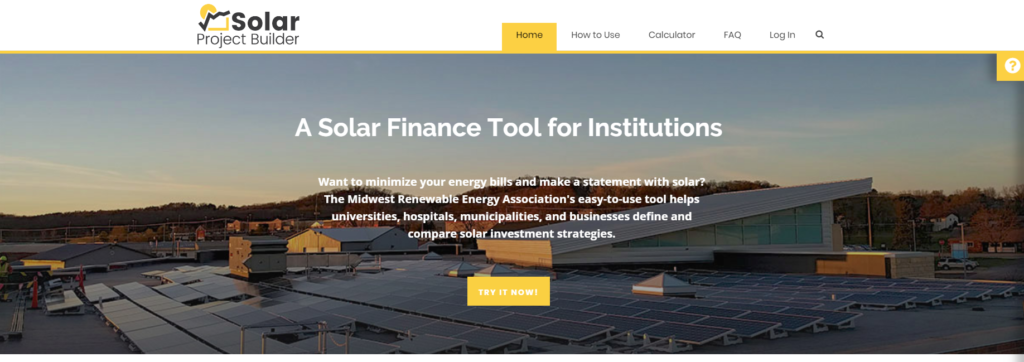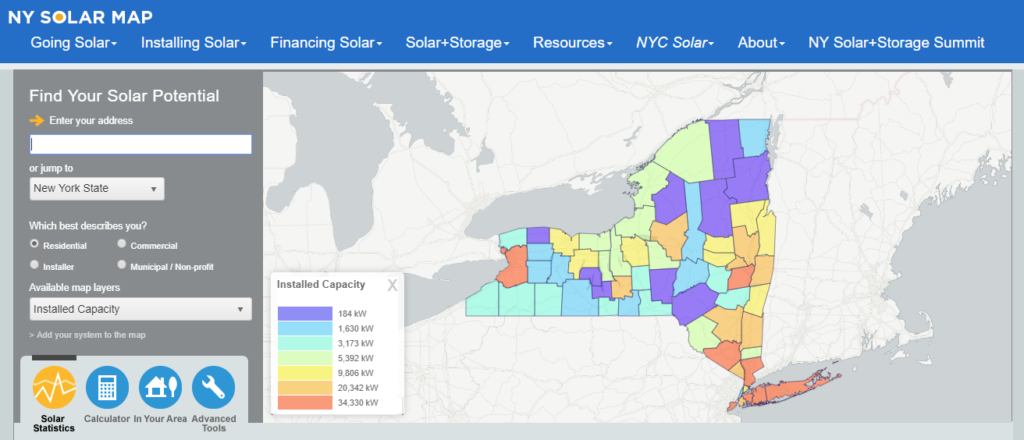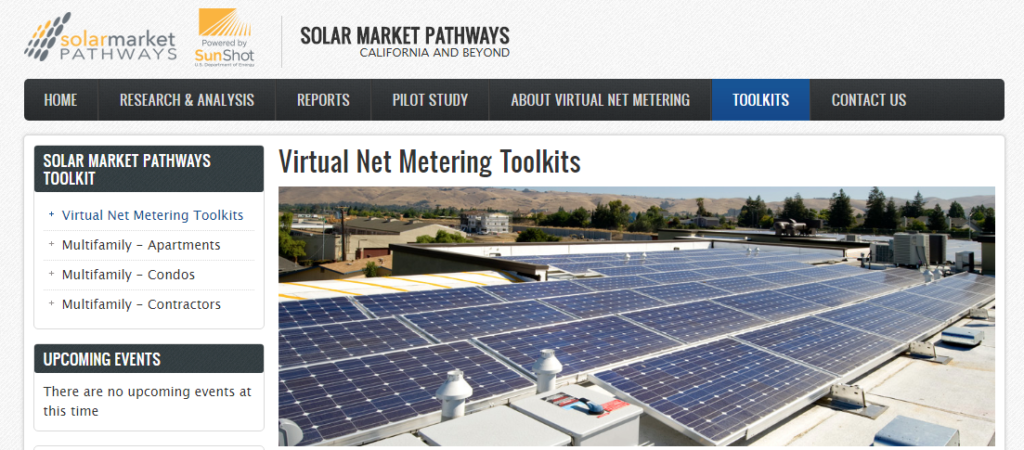Over the past three years, the Solar Market Pathways project, a U.S. Department of Energy Solar Energy Technologies Office initiative, has supported 14 innovative solar projects around the country with the goal of increasing solar energy adoption by reducing the soft costs associated with solar.
These projects have generated an abundance of new online tools and how-to guides to help customers, developers, local governments, universities, and other stakeholders study and make decisions about solar energy.
The tools include financial calculators, increasingly sophisticated rooftop solar potential tools, manuals, checklists, and software to integrate solar with battery storage systems. They focus on community solar, energy resilience, new markets, colleges and universities, and multi-family housing.
The goals, progress, and resources from each of the 14 projects can be found on the Solar Market Pathways website. Here are some of the best online tools and guides:
Software Tools
Solar Finance Simulator
Midwest Renewable Energy Association
The Solar Finance Simulator is an online tool for universities, hospitals, municipalities, nonprofits, and businesses to simulate long-term financial forecasting for four types of solar investments. Using their own values, users can simulate and compare financial projections for direct ownership, power purchase agreements (PPA), debt financing, and operating leases. It works for both taxable and tax-exempt entities. The tool can be used to guide or validate potential projects, compare proposals, or simply help users become more familiar with financing structures and common transaction costs. The Midwest Renewable Energy Association offers online and in-person training on this tool and others.
Solar Resilient
City and County of San Francisco
Faced with the ever present threat of an earthquake and other natural disasters, the City and County of San Francisco has developed a plan to deploy solar+storage systems on critical facilities. To assess sites, they developed SolarResilient, a tool that estimates technical specifications for solar and battery systems. The online tool allows building owners and city departments to do an initial screen on buildings, developing a portfolio of options before embarking on more detailed studies. It allows users to develop a quick and low-cost way to create a holistic energy security strategy for a city or county.
Community Solar Business Case Tool
Cook County Department of Environmental Control
Working with Elevate Energy and West Monroe Partners, Cook County (Chicago) has developed a spreadsheet tool for evaluating the costs and benefits of a community solar project. Illinois recently passed enabling legislation for community solar, and interest is strong among both developers and customers. The Community Solar Business Case Tool is a flexible financial model that uses the panel purchase or panel lease price as a basis for project economics. It calculates costs, performance, and benefits, and provides a basic “breakeven” price for purchased or leased systems from the perspective of both the customer and the system developer. Users can change all key inputs to tailor the analysis to their situation.
Local Potential Maps and Calculators
New York Solar Map
City University of New York
The City University of New York’s Sustainable CUNY program has developed a dashboard showing statistics on the growth of solar in New York State, with county and city-level maps, charts, and more interactive features. The map has a growing number of layers, showing solar deployment, costs, utility data, permitting regulations, and the location of battery storage systems in New York City. A cost and performance calculator uses Google Sunroof data on exposure to estimate the size and performance of a system on any building in the state. And as part of an assessment of energy resiliency, CUNY is investigating optimal locations for siting solar+storage on critical facilities.
Duluth Shines
Ecolibrium3
The sun shines even in chilly Duluth, Minnesota, on the western tip of Lake Superior. Local nonprofit Ecolibrium3 has worked with the City of Duluth, the University of Minnesota Duluth’s Center for Spatial Analysis, and the National Renewable Energy Lab to develop an online tool that shows not only whether a roof has good solar exposure, but the size of a potential system, potential costs and energy production, and incentives that are available. Their new Solar Suitability Application does an initial estimate to design a rooftop system, quickly and at no cost.
Decision Tools and How-To Guides
Toolkits for multi-family housing
Center for Sustainable Energy
Apartment and condo dwellers are often blocked from going solar because they don’t have direct access to solar panels on the roof. California is one of few states to offer a virtual net energy metering (VNEM) tariff to credit energy output from one solar system to tenants in a building. Initially just for low-income buildings, the VNEM tariff was expanded to all multi-tenant and multi-meter residential, commercial, and industrial properties in 2011.
But only a few of California’s three million apartment buildings have taken advantage of the tariff, due to a lack of awareness combined with some implementation difficulties.
To help jump-start this market, the Center for Sustainable Energy has developed a set of Virtual Net Metering Toolkits. For building owners and managers, the toolkits feature roadmaps, checklists, and worksheets. Contractor toolkits include interconnection resources, and a group of interactive multi-family density maps to help in targeting and acquiring customers in California.
Joint procurement guides
Council of Independent Colleges in Virginia
When the Council of Independent Colleges in Virginia (CICV) set out to expand solar on campuses in Virginia, there was only 6 MW of solar in the whole state. Their plan was to work with 15 member colleges to develop and deploy 30 MW of solar on campuses that collectively serve 30,000 students, moving the campuses from coal to solar.
They developed feasibility assessments and multi-year Solar Master Plansfor each campus, and put them out to bid, leveraging their collective purchasing power to reduce costs. To help other colleges follow their lead, CICV has made all of their materials available online, including spreadsheets, standard power purchase agreement contracts, checklists, and more.
These tools, maps, calculators, and how-to guides offer help to projects of all kinds, all over the country. By learning from the experience of the Solar Market Pathways projects, others can reduce soft costs and accelerate solar deployment.
Written by Bentham Paulos, on behalf of the Institute for Sustainable Communities.
About the Solar Energy Technologies Office
The U.S. Department of Energy Solar Energy Technologies Office (SETO) is a collaborative national effort that aggressively drives innovation to make solar energy fully cost-competitive with traditional energy sources before the end of the decade. Through SETO, the Energy Department supports efforts by private companies, universities, and national laboratories to drive down the cost of solar electricity to $0.06 per kilowatt-hour. Learn more at https://energy.gov/eere/solar/solar-energy-technologies-office.




